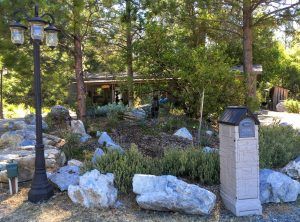According to Merriam-Webster, “transplant” means to “lift and reset (a plant) in another soil or situation. As a noun, it means “a person or thing that is” relocated. Most residents of the Mother Lode are not native here. Does our transplanted gardening knowledge and experience from elsewhere make us better gardeners in our new location? I asked some master gardener transplants to Tuolumne County what surprised and challenged them about gardening in the Mother Lode. Here are their experiences.
Elevation and shade: One master gardener experienced her first garden at an elevation of 4000 feet. Raised beds already constructed on the property received too much shade. Rather than try to plant in a shaded area, she planted in large pots that could be moved to take advantage of available sunlight and water. She will plant in more pots next year because flexible placement led to a successful harvest.
Another recent master gardener transplant spent the first entire year on the new property mapping and tracking the path of the sun before he planted anything. The take-away gardening lesson: The first year in a new location is one of experimentation. Stay flexible.
Seasons and critters: A new graduate of the master gardener training program recently moved from Southern California. She was surprised by first frost and last frost dates. Moving from “perfect weather,” there was no need to pay attention to such information in her former garden. She learned that “days to germination” may mean that it is too early in spring for seeds to sprout or too late in the fall for the plant to produce fruit before cold weather kills the frost-tender annual.
And critters…who knew that a healthy, happy plant in the evening could be sucked down a gopher hole by morning? Or that deer can jump THAT high? The take-away gardening lesson: There’s much more to be aware of here in the foothills. Gather as much information as you can.
Fantasy vs. reality: A long-time master gardener had an “aha” moment recently. On her fridge were gardening magazine photos chosen to offer “inspiration” for her landscape plans. All the photos had a single theme – lush, “greener than green all summer long,” profuse plantings of trees, shrubs, perennials and flowering vines. Those landscapes do well in humid areas with summer rains. Her realization…it would never happen in her hot, dry, blast-furnace summer yard.
The take-away gardening lesson: Garden with a sense of the place where you live. Lawns were created in foggy, cool England; they are not appropriate for hot, dry summers with no rain. A master gardener friend fell in love with agaves, but learned they grow well in zone 8, a much hotter and drier environment than the mixed conifer forest in zone 1A where she lives. A long-ago master gardener transplant from Florida discovered that the amount of water needed to recreate a tropical landscape in the Mediterranean climate of the California foothills is neither sustainable nor affordable.
For each of these gardening challenges and surprises, the lessons learned can apply to all gardening situations – experiment, stay flexible, gather information and adapt to your own location.
Rebecca Miller-Cripps is a UCCE Master Gardener in Tuolumne County. UCCE Master Gardeners of Tuolumne and Calaveras Counties can answer home gardening questions. Call 209-533-5912 or fill out our easy-to-use problem questionnaire here. Check out our website here, You can also find us on Facebook.

